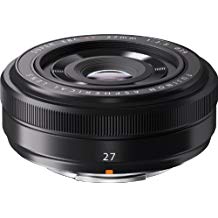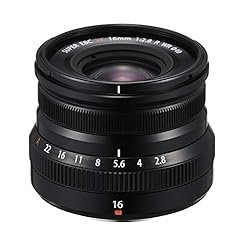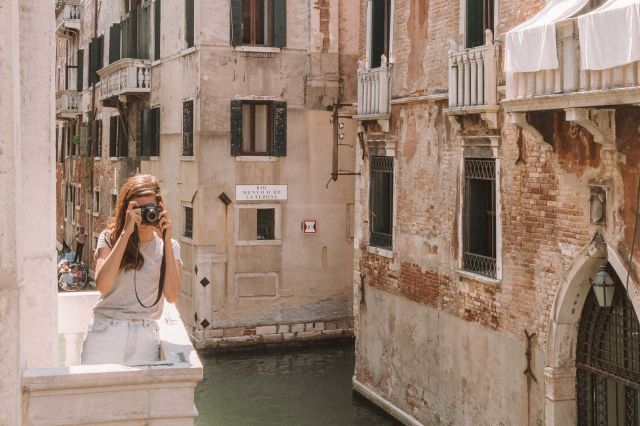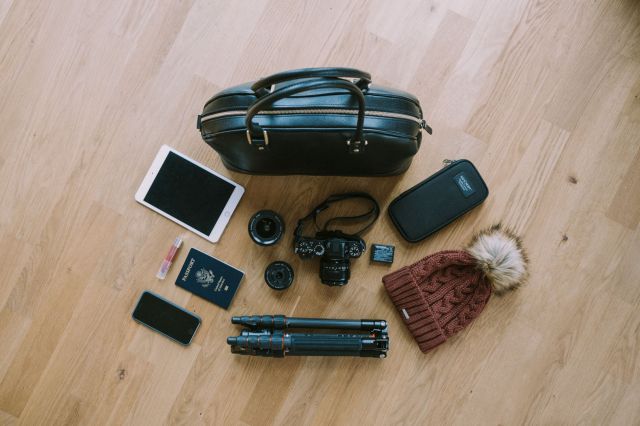Fuji’s 27mm pancake lens was the third lens by Fujifilm I’ve ever owned, after the kit zoom lens and the classic 35mm f1.4. I was looking for something a little wider than than the 35mm but still good for photos of people, and with enough breathing room to capture some landscapes.
I’ve owned this lens for about 3 years now, and can give a pretty good idea of what its pros and cons are. Its traveled with me to places like Italy, Brazil, and Iceland and captured great photos.
Read on for my non-technical review of the Fuji 27mm pancake lens: the great things about this lens as well as its limitations, the best alternatives to this lens, and how to tell if this lens is right for your situation!
TIP: Are you looking to compare more Fujifilm lenses? Check out my post on the best Fujifilm lenses for travel for side-by-side comparisons between a number of lenses I use on the road. I’ve also got a dedicated article that reviews the Fuji 16mm f1.4.

Still trying to decide if the Fujifilm 27mm lens is the right one for you?
Keep reading for an in depth look at each of its pros and cons based on my experience owing this lens, plus the content you’re actually here for: sample photos!
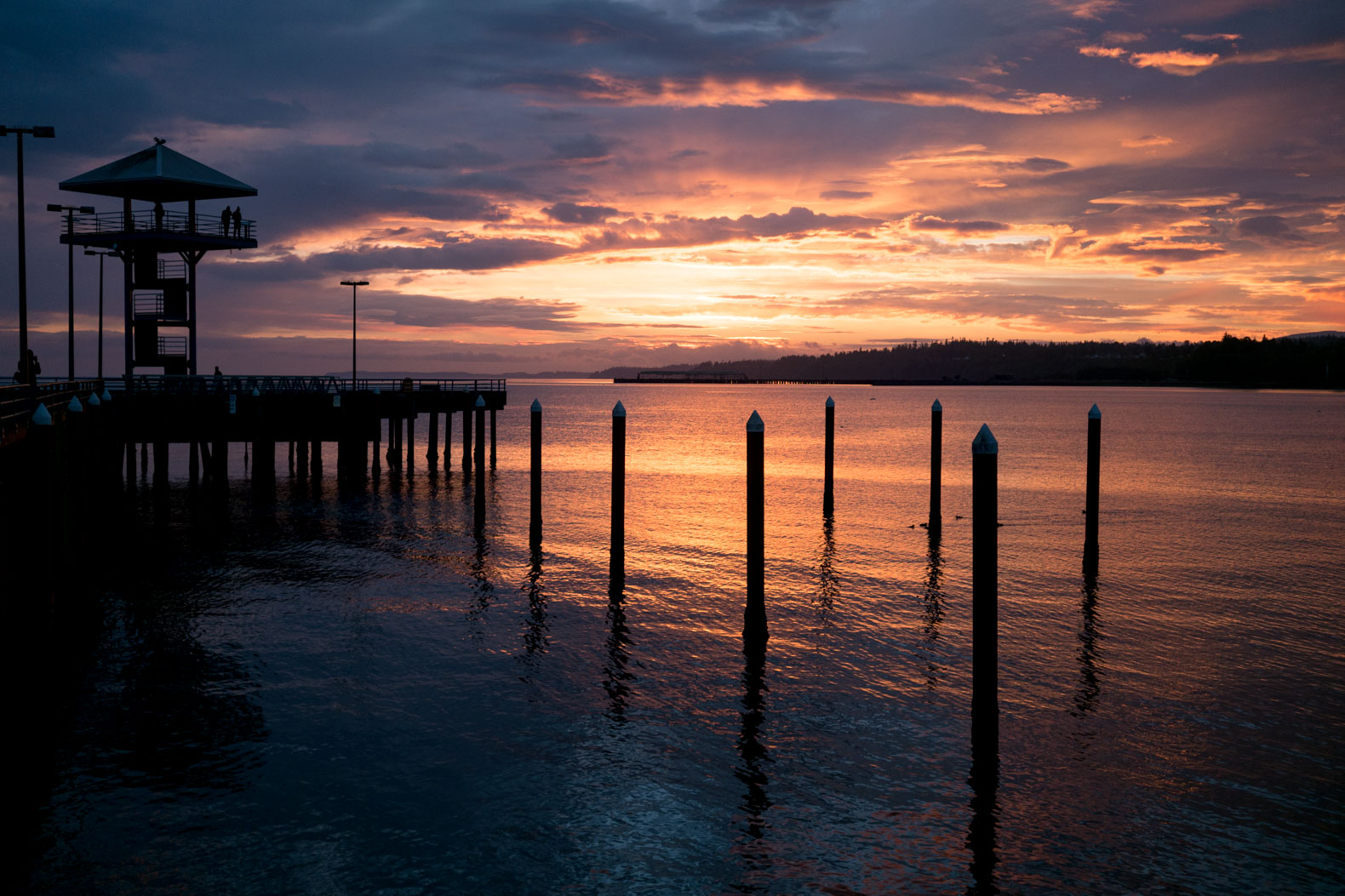
Great things about the Fujifilm 27mm pancake lens
Fujifilm’s 27mm pancake lens has a lot going for it, both optically and in terms of form factor. Here are a couple of the main benefits I’ve personally send when using this lens over the last couple of years.
The size makes you look less like a “DSLR tourist”
There are simply some places in the world where it’s just not safe to walk aroung with a huge, expensive camera/lens combo. Fuji's 27mm pancake lens is a really great choice when you just need to travel light and inconspicuous. My main use case here is traveling to Brazil, which I’ve done twice now.
One of my colleagues at work was almost robbed for his DSLR on a beach in Brazil. He was just lucky they didn’t have any weapons to compell him to give away his camera. Of course I can only guess that a smaller camera with a tiny lens like this wouldn’t have drawn as much attention.
In general, this lens on camera means I look a lot less fancy than the guy next to me with a lens longer than my head! Looking like an amateur, in this respect, is a very good thing. As a small girl with a fair amount of money hanging from my neck, it’s important for me to think about safety when traveling with a camera.

Photo taken surreptitiously with Fujifilm XF 27mm f2.8
You’ll actually take it with you everywhere
One of the best things about having such a light lens option is being able to toss the camera in my bag and not instantly feel like my arm is going to fall off. So often when you have excessive photography gear, it becomes all too easy to just leave you kit at home. What I really appreciate about working with minimalist travel photography gear. is that it’s never too much of a hassle to carry with me.
You know what they say: The best camera is the one you have with you.
And when you use the Fujifilm 27mm lens I think there is a higher chance you’ll be bringing your camera along for your travels.
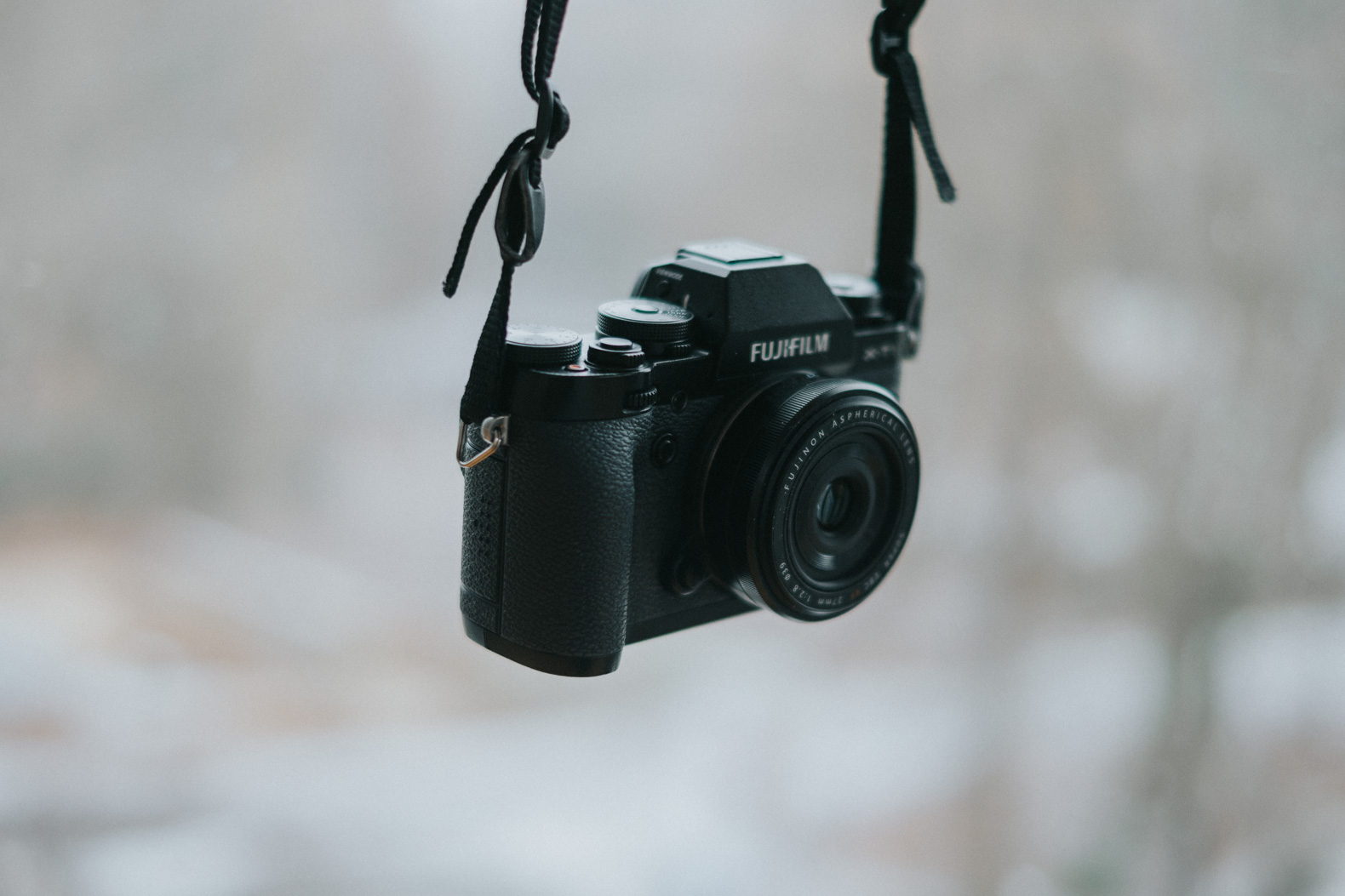
It’s considered one of Fuji’s sharpest lenses
Fujifilm is famous for its lenses. They’ve done it all: space glass, military binoculars, even cinema lenses that cost SIX FIGURES.
What I’m trying to say is: this lens is sharp. Some people argue that this lens is the sharpest Fujifilm has in its lineup. Secret time: I think people say that about like every Fuji lens, but hey, it’s a good reputation to have.
To be totally honest, I’m a hobby photographer and I can’t look at two sample shots and see more than the most obvious differences. But I do notice when I open photos I’ve taken with this lens and every leaf is distinguishable, rather than a muddy green mess.
It makes the editing process simple, and there’s no need for additional sharpening. The pictures look good straight out of the camera.

Fast focus is great for moving targets or street photography
Zip! This guy hones in on his target like a velociraptor on speed. If you’re like me and you’d chase a butterfly down a football field just to take its portrait, fast focus is important! I hear that street photographers also dig this lens because it means never missing a fleeting moment on camera.
Plus with the 27mm focal length, you get just enough crop that it looks like an intimate moment. That’s something I also really like about this lens, that it fits more in without looking too wide.

You can still eek out some bokeh
Whenever someone is talking about the beautiful “blurry background” of a photo, or balls of light that form in the background of a photo, they’re talking about bokeh. This camera does not create the super dreamy bokeh you’ll find with either of Fuji’s 35mm lenses. BUT. You can get some lovely out of focus areas that are a little more…interesting.
The out of focus areas in photos by this camera are still distinguishable, and lend a sense of place to the pictures it produces. A few pretty balls of light, along with tangled strands of background activity. I like this effect because I can isolate my subject while still placing them somewhere.
That’s kind of the point of travel photography, right? I’m not looking for a perfect flower closeup – I want to see that flower in its natural habitat! This lens gives you that, beautifully.
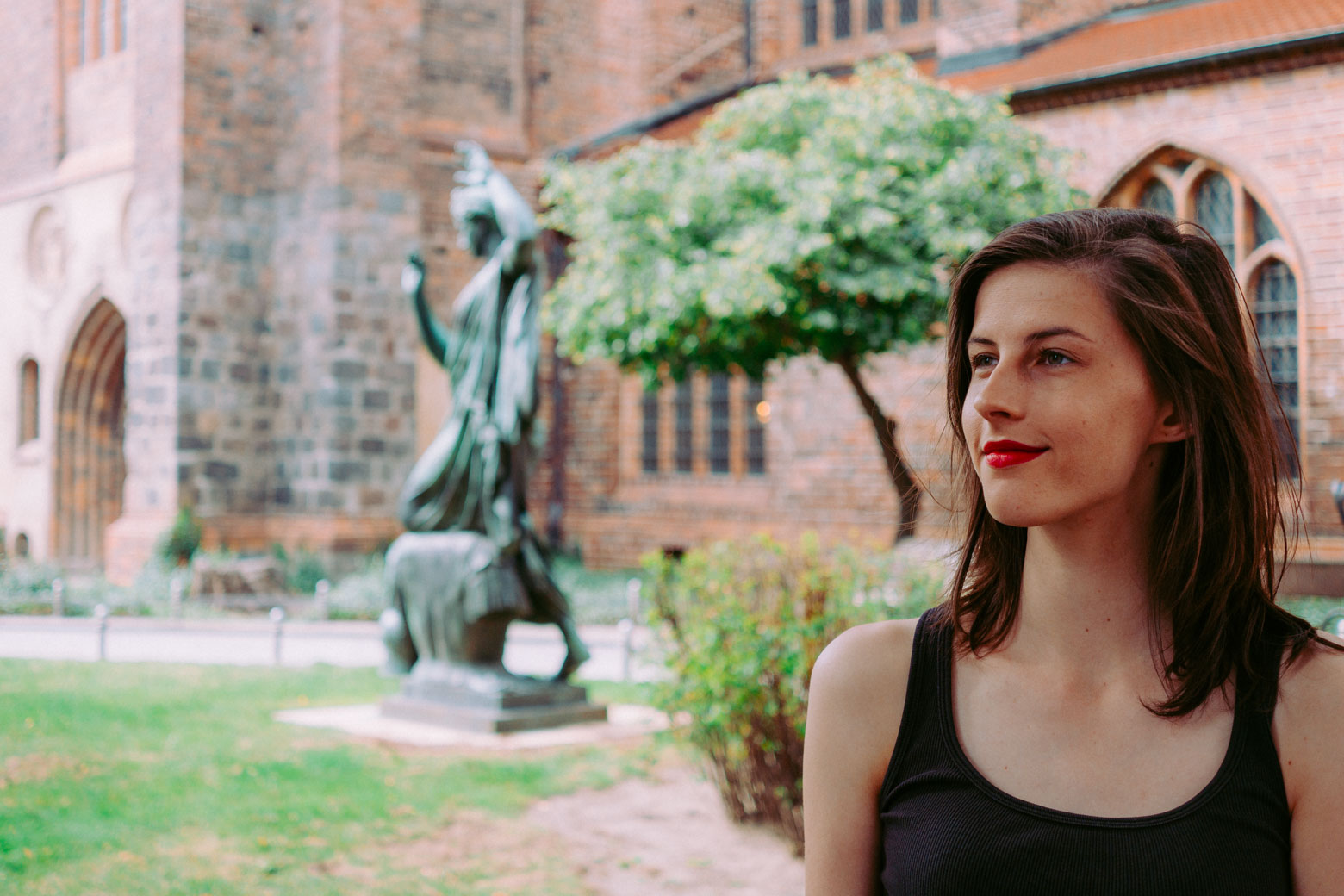
Fits everything in – naturally
Do you ever have to take a few steps back – or a lot of steps back – to fit something into your photo? One thing I hate the most is when I have to step backwards, and fitting, say, the façade of a beautiful church also means including a telephone pole or a garbage can. Blech! It can totally ruin the picture and make it not worth taking at all.
That’s where a wider angle comes in – while you’re still in front of the garbage can, the whole sceen fits nicely into the frame.
On the flipside, a lens with an angle that is too wide makes everything really tiny, especially if you can’t get close enough. Then suddenly a beautiful butterfly lands in front of you, but it looks so small through your lens that it’ll be indistinguishable.
The Fujifilm 27mm pancake lens is a fantastic compromise – you get a little bit extra in the frame, but you don’t have to stick the camera in someone’s face to get a decent portrait. Win, win, win!
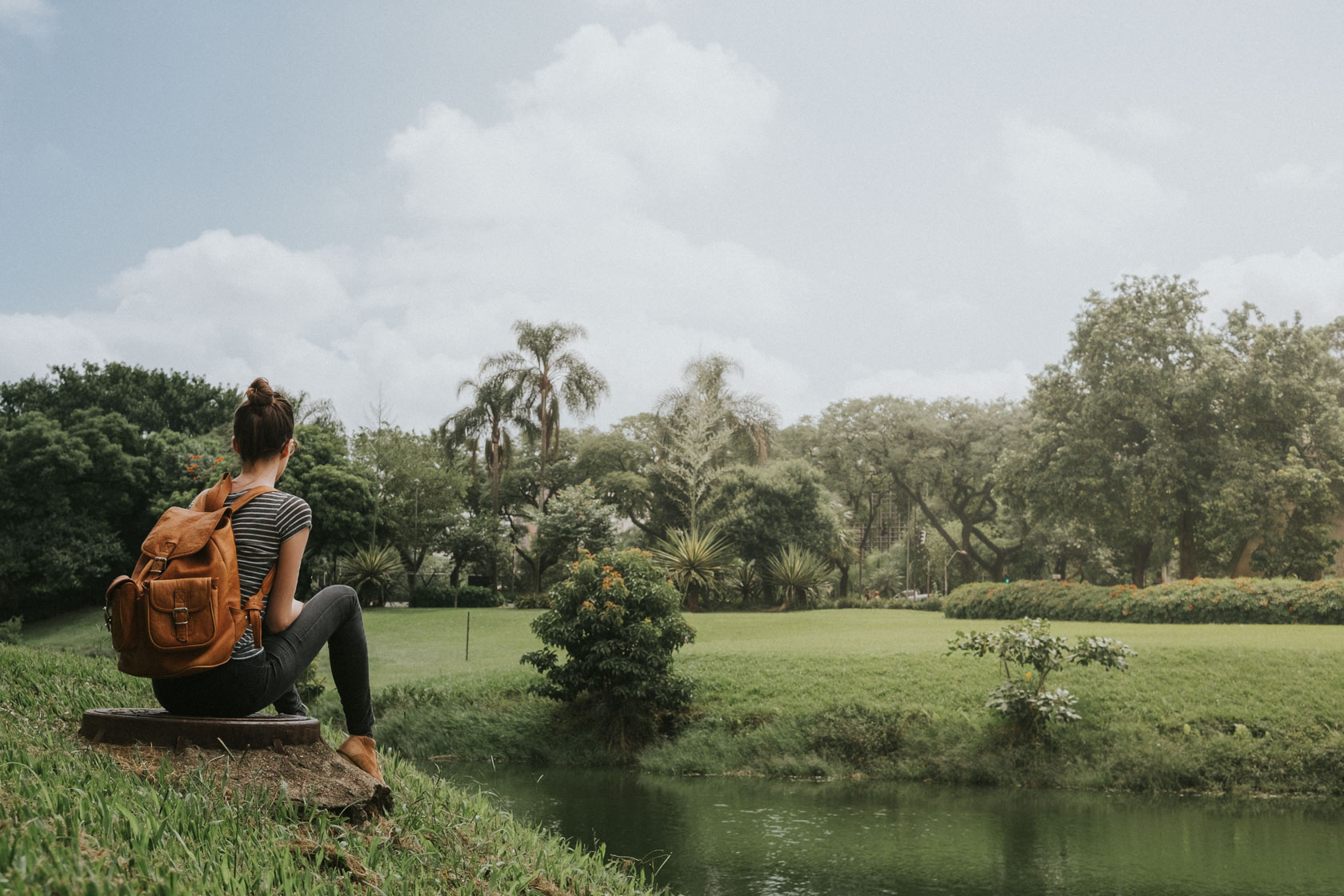
Enough about the benefits! What about the drawbacks?
Of course, I can’t share only the good. There are a couple of things you should be aware of when picking up this lens:
- No super close shots. The minimum focus distance (how close you can get to your subject and focus) is officially a little under 2 feet, or 34cm. No macro photos with this guy!
- It’s not that cheap. You can check current prices on Amazon – but then again, there aren’t a lot of lenses in Fujifilm’s range that aren’t higher than this or edging in on double the cost.
- You have to buy the lens hood separately. – Honstly I never bought one, don’t tell! I rarely use lens hoods on my camera lenses and it’s usually not an issue.
- There is no aperture ring. – Instead you need to change the aperture using the dial on the backside of the camera where your thumb is. In theory this is more ergonomic but it’s a bit odd when all the other lenses have a physical aperture ring. Of course, the lack of an apterture ring is how the lens stays so compact.
- It’s not weather resistent. – While I honestly still use my non-WR Fuji lenses in some hairy situations, it’s good to know that this lens isn’t weather resistent. If that’s important to you, read on for my list of alternatives to this lens.
Alternatives to the Fujifilm 27mm f2.8 pancake lens
As I shared at the beginning of the post, there are a couple of main alternatives to the Fujifilm pancake lens. It really depends what your priorities are, which lens is going to be right for you. To recap, here are the lenses I recommended you check out if you’re on the market for a compact, wide-angle lens:
-
Fujifilm XF 23mm f2 WR
– I
own and love this lens. It took a while to grow on me, but it so so flexible
and lightweight (and weather resistant!) that I use it all the time. It’s not a pancake
lens but still very compact. I also don’t feel that the 23mm is too wide in most situations.
-
Fujifilm XF 18mm R
– This lens
is also a pancake lens, but at 18mm it’s much more of a wide angle lens than the 27mm. On the upside,
the 18mm features a physical aperture ring which is great. But on the downside, like the 27mm it’s not
weather resistant. These days I honestly think there are better options than this lens if you want to go wide and stay compact, such as the lens listed below.
-
Fujifilm XF 16mm f2.8 WR
– I already own the f1.4 version of this focal length, and what I
can tell you is that 16mm is a surprisingly versatile focal length for every day photography.
While it would be great if this lens was f2 instead of f2.8, it weighs a fraction of what my f1.4
weighs (as well as costing a fraction of the price). Probably the best value wide-angle lens
in the Fuji lineup.
Here are the main pros and cons of the 27mm lens and how it holds up to its competitors for lightweight lenses at a similar focal length. Take a look and decide for yourself.
| Fujifilm's compact and wide-angle lenses | ||||

|

|

|

|
|
| Rating / Reviews | ★★★★ (4.4) | ★★★★ (3.8) | ★★★★★ (4.7) | ★★★★ (4.1) |
| Price range | $$ | $$$ | $$ | $$ |
| Pancake lens | ✔ | ✔ | - | - |
| Maximum aperture | f2.8 | f2 | f2.8 | f2 |
| Weight | 78g | 116g | 155g | 180g |
| Weather reistance | - | - | ✔ | ✔ |
| Latest autofocus technology | - | - | ✔ | ✔ |
| Pros | Super light. Fast to focus. Discrete. Very sharp. | Wider aperture. Wider angle. | Wider angle. Weather resistant. Latest autofocus technology. | Flexible. Weather resistant at f2. Latest autofocus technology. |
| Cons | Only f2.8. Not weather resistant. Made of plastic. No aperture dial. | Expensive. Not weather resistant. | Only f2.8, but that's how it stays compact compared to its f1.4 alternative. | Slight softness at f2, though it has never been an issue for my personally. |
| Get this if | Low weight is top priority and low light is not needed. | Low weight is a top priority and you need low light and wider angle. | Low weight is medium priority and you want a wide-angle lens with weather resistance. | Low weight is medium priority and you want a general-purpose lens with weather resistance. |
| Check prices and availability | Check prices for the 27mm f2.8 | Check prices for the 18mm f2 | Check prices for the 16mm f2.8 | Check prices for the 23mm f2 |
Do keep in mind, even though the 16mm and 23mm lens are twice as heavy as Fuji’s 27mm lens, the reality is that they are all very lightweight. While, e.g. the 23mm f2 is 180g, my main wide angle lens is the Fujinon XF 16mm f1.4 which costs twice as much and weighs 375g.
When is the Fuji 27mm pancake lens right for you?
In my opinion, the main selling point for the 27mm lens is that it is both an ultra-compact pancake-style lens while also being NOT wide-angle. If I have to travel with just one lens, I find it really hard to travel with just a wide-angle because it makes everything so small. I would rather take multiple photos with my 27mm and stitch them together in Lightroom to get wider-angle shots. Of course, some people feel differently and it depends on the type of photos you’re looking to capture!
Check the price of the Fujifilm 27mm f2.8 Amazon
Quick overview of all lenses mentioned in this post
For a quick recap, here are the lenses I’ve compared in this post and the best use-cases for each one, depending on whether weight, aperture, flexibility, or weather resistance are your top priorities.
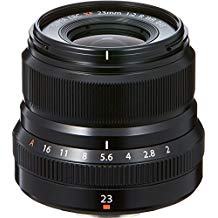 Fujinon XF 23mm f2 WR
Fujinon XF 23mm f2 WR
Light and weather resistant lens for everyday use, with modern autofocusing system
If you want to learn more about Fuji’s difference camera offerings and how to pick a camera body, hop over to my post on the best Fujifilm cameras for travel for more detailed comparisons.
Do you bring your camera with you wherever you go? Have you ever left it at home or the hotel because it’s just too heavy?
Share your gear and the difference between your daily and your travel photo routine in the comments!
